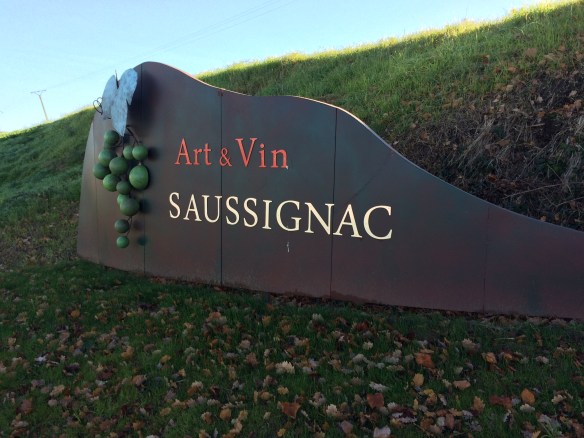Let me introduce you to Miriam McConnon, an Irish visual artist based in Paphos, Cyprus.
Inspired and Inspiring is how I would describe the narrative art that Miriam produces: narrative in the sense that each painting tells a particular story in a unique way.
Earlier this year, I went with a friend who is also familiar with Miriam’s work, to meet Miriam in person in her studio in the old town of Paphos. As chatty and charming in person as she is on Zoom, we enjoy a coffee with her and talk about her art. I take the photos shown here during our visit and they are reproduced with Miriam’s permission.
Miriam tells us about her most recent exhibition called: “ Refugee Armour “, in which she paints the stories of individual young male refugees by incorporating images of items they brought with them to Cyprus from their home country, transformed into a painted coat, like a protective coat of armour. The pattern of each ‘coat of armour’ is specific to each young man’s journey to safety following war. The notion of Armour is a powerful metaphor.
Not only is Miriam an imaginative artist but she’s also a knowledgeable art history educator. I benefit from the weekly on-line art history talks that she conducted for two years through the worst of the COVID seclusion. It was a delight to meet up on line each week with a group of people from different countries who were interested in art history and have the opportunity, with Miriam’s guidance, to explore different artists and art periods. So I feel I got to know something of Miriam through the medium of Zoom.
Miriam continues to teach but now teaches painting in person in her studio in Paphos. She balances her lessons with dedicated time to produce her own work as she has an active exhibition program.
An earlier theme that Miriam pursued was painting domestic landscapes. In the photograph of Miriam above, two paintings of a domestic nature are visible. One, the series of coats, and the other, a favourite of mine, is her tea-cup painting. She also rendered this image of multiple tea cups in a large scale drawing. Tea cups foster such an image of home and comfort. Each cup is decorated differently to represent a different person and that person’s life. It’s brilliant!
I have one of her paintings that we bought many years ago of Irish postage stamps. We bought this before we knew anything about Miriam’s work but the stamp painting resonated with our Irish connections. The painting is based on a stamp collection of her Mother’s. It seems so natural of Miriam to bring family history into her paintings in such a reflective way.
- Irish Postage Stamps in her Mother’s stamp album, painted by Miriam McConnon – Elizabethsvines collection
Talking about family, Miriam is strongly connected to her family and roots in Ireland where she visits regularly. She is represented in Dublin by the Olivier Cornet Gallery, where her work is exhibited.
In 2022, in conjunction with the Olivier Corning Gallery, she created a particularly imaginative and compassionate installation called ‘Lost Lace’ in Iveagh Gardens, Dublin. This installation consisted of 10,000 white roses made by Miriam from white handkerchiefs and arranged by her in the gardens in beautiful lace patterns to symbolize individually a life lost in Ireland and Northern Ireland due to the Coronavirus Pandemic. This was a collaborative project between Miriam and the poet Jessica Traynor with the participation of the families who lost loved ones to Covid 19. This unique and imaginative installation demonstrates Miriam’s artistic practice and her creative thought process leading up to the finished installation.
In Cyprus, Miriam is represented by the Diatopos Gallery in Nicosia.
Her works are in numerous public and private collections internationally. Her painting, Aaron’s Armour, is in the collection of the Irish Department of Foreign Affairs at the Irish Embassy in Cyprus.
It’s only in researching Miriam’s extensive artistic background that I fully appreciate the great depth and breadth of the skills and expertise that she brings to communicating to the public social issues and social change through her talented drawing and painting. I recommend reviewing Miriam’s website to know more about her extensive background. Isn’t this often the case, that we rarely fully appreciate someone’s skills, knowledge and experience even if we think we know something about them!
Given that I typically write about wine and food, I ask Miriam which are her favourite Cypriot wineries! Back comes the quick answer: Zambartas, Tsangarides, and Makkas. She prefers white wine. I’ve visited and written about Zambartas and Tsangarides wineries and their wines and those earlier posts are added at the end. However, I am unfamiliar with Makkas; so a new winery to explore!
The art world is a tough and competitive environment. I raise a glass of Tsangarides Xynisteri white wine to Miriam and wish her continued success as she digs deep with her inspired painted narratives.
Happy Easter!
Elizabethsvines
References: Miriam McConnon www.miriammcconnonart.com
Olivier Cornet Gallery, Dublin Www.oliviercornetgallery.com
Diatopos Gallery, Nicosia. Www.diatopos.com
Cyprus Wines: Zambartas Wineries, Agios Amvrosios, Limassol. The stars have aligned…!
Cyprus wines: Tsangarides Winery and a portrait of happiness











































































































































